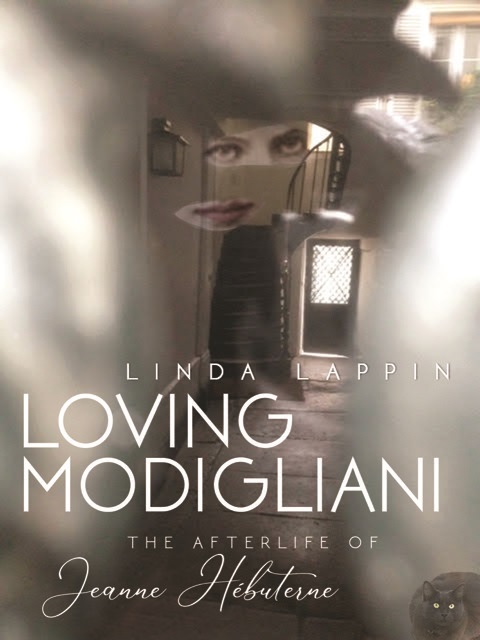Austen and Michaelmas
September 28, 2019 by Alina K. Field in category Writing tagged as #Historical, Hunting in the Regency, Jane Austen, Michaelmas, Mr. BingleyQuarter Days
I’m back with another Quarter Days’ post about Michaelmas
True Janeites (fans of Jane Austen) might be interested in a fun website I stumbled across while researching a story I have in the works.
The “Chronology of Pride and Prejudice, according to MacKinnon and Chapman” takes us through the detailed timeline of P&P’s events. (Oh, to be such a renowned author that fans prepare a chronology for your novel.) I don’t know about my fellow A Slice of Orange authors, but I always have to check and double-check that I have the story days correct.

Mr. Bingley moves in
Pride and Prejudice begins when Mr. Bingley takes the lease to Netherfield Manor and moves in.
As I’ve mentioned in earlier posts, Quarter Days might be occasions for feasting and parties, but they also had a commercial significance. Contracts were entered into or terminated, property was leased, and rents and wages were paid. Thus, as the story begins, a wealthy bachelor in need of a wife kicks off the story by becoming a neighbor of Mr. Bennet, a man with five unmarried daughters.

And Mr. Bingley has been kind enough to bring along an even richer bachelor friend! Well of course; late summer/early autumn was also the start of hunting season, when a man might welcome parties of friends to tramp through his fields and shoot birds. Mr. Bingley would want to show off his new domain to his influential friend, Mr. Darcy.
The Glorious Twelfth
Hunting season started on the Glorious Twelfth of August, after the social and parliamentary season ended. Presumably farmers had finished the harvest, so the crops were safe from hordes of hunters.

Bird season began a bit later, in September running through October. Hunting in Britain was very much dominated by the elites, even during periods of economic downturn and food scarcity. Ownership of weapons and even dogs was restricted, and penalties for poaching might include transportation. (See my post about this topic.)
Autumn was prime house party season also because families had shipped off their young males to boarding school in time for the Michaelmas term. No young boys would be running about distracting the shooters or worse, accidentally shooting themselves in the foot. They’d be back home though for the next Quarter Day, Christmas, which is when I’ll return to A Slice of Orange. See you then!
For more about Michaelmas, take a look at my earlier posts: Michaelmas Goose, and A Michaelmas Menu.
8 0 Read moreQuarter Days: Queen Victoria, Mangoes, and Book vs. Film
June 28, 2019 by Alina K. Field in category Quarter Days by Alina K. FieldGreetings and happy summer!
 A few ideas popped up for this post, but since I write historical fiction, I decided to honor Midsummer by talking about Queen Victoria, with a passing mention of mangoes.
A few ideas popped up for this post, but since I write historical fiction, I decided to honor Midsummer by talking about Queen Victoria, with a passing mention of mangoes.
June 28, 2019, is the 181st anniversary of the coronation of the nineteen-year-old Queen Victoria. Her stable and fecund marriage and her famous stodginess has branded the looooong years of her reign in the same way the post-World War II 1950s are remembered as Ozzie and Harriet-land.
For someone so stuffy and boring, Victoria has managed to stir up a lot of twentieth and twenty-first century publicity. The movie Mrs. Brown depicted her long and intimate friendship with Scottish servant, John Brown; The Young Victoria covered her early life, marriage and court intrigues; and of course, there’s the PBS mini-series about her which just finished its second season.
Her most recent depiction in film is Victoria and Abdul. The movie features the “Munshi-mania” surrounding her close friendship with another much younger and much more-foreign-than-a-Scotsman male servant. Abdul Karim, a Muslim Indian from Agra, became her teacher, or “Munshi”.
Back to our June fruit
 Last year Victoria’s name popped up when the Wall Street Journal featured an article by novelist Chandrahas Choudhury about the 1663 varieties of Indian mangoes. Persuaded by her Munshi’s praise of the “Queen of Fruit”, Queen Victoria ordered her household to import mangoes from India. They were, predictably, “off” because of the fruit’s short shelf life.
Last year Victoria’s name popped up when the Wall Street Journal featured an article by novelist Chandrahas Choudhury about the 1663 varieties of Indian mangoes. Persuaded by her Munshi’s praise of the “Queen of Fruit”, Queen Victoria ordered her household to import mangoes from India. They were, predictably, “off” because of the fruit’s short shelf life.
I personally don’t like mangoes, but Choudhury has an explanation for that:
Whichever god brought forth the mango, she did so as a project that would frustrate imperial desires in the 19th century and defeat even the global supply system of capitalism in the 21st. That’s why almost all the mangoes in American markets are the fine-looking but bland, fibrous pretenders from Florida, Brazil or Mexico, not the storied ones of India.
Someday maybe I’ll get to visit India and sample a true Queen of Fruit.
Victoria and Abdul
 Motivated by the mango story, I watched the movie Victoria and Abdul and started the book on which the movie is based. Shrabani Basu’s book is a beautifully written work of nonfiction. She delves into the patronage culture of Victoria’s court and British colonialism to tell the story about the deep friendship between the Queen and Karim.
Motivated by the mango story, I watched the movie Victoria and Abdul and started the book on which the movie is based. Shrabani Basu’s book is a beautifully written work of nonfiction. She delves into the patronage culture of Victoria’s court and British colonialism to tell the story about the deep friendship between the Queen and Karim.
When the elderly Queen Victoria is smitten by young Karim, the court is appalled at their growing friendship and the gifts she showers on him as he tutors her in Urdu and Indian culture.
What was the Queen’s motivation? Basu has this to say:
What her family could not comprehend was that the Queen was a born romantic…The death of her beloved husband had left her lonely and heartbroken…It fell to John Brown to draw her out of her self-imposed isolation, and the Queen soon leaned strongly on him. Brown was devoted to her and she could talk freely to him…His death once again robbed her of a companion.
When the Munshi arrived…his presence lifted her spirits…The Queen sensed a certain depth in Karim and found she could talk to him comfortably despite the language barriers. Karim brought her closer to India, the country that she had always longed to visit.
Is true friendship and loyalty possible between a powerful older woman and a younger man? Why would Karim leave the warmth of India for the cold and hostile British Court?
In the film, an Indian servant tells the British courtiers that Karim was toadying for favors like everyone else there. Otherwise, the filmmakers depict a close friendship between the Queen and her Munshi. Based on her research, Basu believes Karim’s regard for the Queen was genuine.
Book vs. Film
“All history is written by the victors,” and worthy of questioning. This is especially true of films which are crafted to make sure tickets sell and the audience doesn’t fall asleep. Setting, costume, and language bring a story to life, but filmmakers pick and choose what to include, what to omit, and what to make up to hit all the plot points and story arcs.
The Victoria and Abdul filmmakers did a good job, but they were honest about their craft. The opening credits include this statement:
Based on real events mostly
My vote: if you want the full story, the book is always better. What do you think?
If you’ve read this far, thank you for indulging my historical nerdiness. Happy Summer!
All images are from Wikimedia Commons except for the mangoes which are from depositphotos.com
0 0 Read moreKick Off Your Winter Doldrums with a Spring Writing Conference!!!
March 28, 2019 by Alina K. Field in category Quarter Days by Alina K. Field, Writing tagged as California Dreamin' Conference, Craft Workshops, Tessa Dare, Theodora TaylorNormally I’d devote this Quarter Days column to a topic I’ve uncovered in historical research, but preparations for the California Dreamin’ Conference have consumed my life lately, and I have to share. This is going to be a great conference!
A Chance to Retool and Refresh
From April 5-7, 2019, authors and aspiring authors will gather at the Embassy Suites in Brea, California for workshops on the craft and the business of writing fiction. Plus, we’ll connect up with agents, editors, and industry professionals to help grow our businesses, whether pursuing traditional or indie publishing.

Craft, Craft, and More Craft
And we’re not just covering Romance! Kate Carlisle will teach us how to write a Cozy Mystery, Rebecca Forster will cover Police Procedurals, and Orange County Deputy Coroner Paul Hoag will talk about dissecting a death scene (sorry–couldn’t resist that image). We’ll have workshops on Women’s Fiction, and YA, and Historical Fiction.
Getting Down to Business
Authors pursuing traditional publishing will have a chance to pitch to seven editors and two agents. Those following an Indie track can meet one-on-one with representatives from Ingram Spark, Draft 2 Digital, ACX/Audible and WonderPR. And since everyone, both trad and published, has to market, we’ll find workshops on selling our stories to editors, Hollywood, and most importantly, the readers!
Add-ons
Conference add-ons include a fabulous all day Book Camp on April 5th presented by author and writing teacher, Janice Hardy, offered for $99. Learn how to write that story from start to finish!
Short on cash? You don’t have to attend the full conference to sign up for Book Camp!
For those who do attend the conference, our Editor/Agent critique sessions are full and closed, but we still have spots for a new conference add-on: Special Author Critique Sessions. Spend $10 for an hour of expert advice!
Inspiration, Good Food, and FUN!!!
What’s a conference without keynote speakers, and we have two! Beloved and bestselling author of Regency romance, Tessa Dare, will speak at Saturday night’s dinner. Bestselling Contemporary Romance author Theodora Taylor, known for writing alternative heroes and smart feisty heroines, will speak at Sunday’s luncheon.
And speaking of food–the conference features an opening night reception, soup-and-salad bar lunch on Saturday, and sit-down dinners on Saturday night and Sunday afternoon. For those staying on site, Embassy Suites offers a full made-to-order hot breakfast.
After noshing on appetizers at the Friday night reception, attendees can pull out their laptops and tablets and take part in the great Friday Night Write-In. Get those words flowing onto the page in the company of your fellow writing enthusiasts!
What are you waiting for?
Check out all the great things in store for you at the California Dreamin’ Conference and register today!
2 0 Read moreQuarter Days: Yuletide
December 28, 2018 by Alina K. Field in category Quarter Days by Alina K. Field tagged as Christmas, Hogmanay, New Year's in Scotland, winter solsticeWinter Solstice

’Tis the Fourth day in the Twelve Days of the great feast of Christmas and I’m back to talk about celebrating the winter holidays in the British Isles where the stories I’ve been writing are set.
A week of binge-watching the series Shetland gave me a good appreciation of the closeness of Scotland to Scandinavia. Given the Celtic and later Viking influence, It’s no wonder that many of this season’s customs date back to pagan festivities marking the winter solstice. The word Yule (as in Yuletide and Yule Log) comes from the Norse word “jul” or “houl” meaning wheel.
Saturnalia

Ancient Rome also celebrated the winter solstice in the Saturnalia festivities of ancient Rome. I mentioned in my December post last year that the early Christian church built a religious holiday, Christmas, around this natural time of ancient celebration. Many of the Christmas traditions—Yule logs, mistletoe, feasting–date back long before the designation of December 25th as the birthday of Jesus.
Hogmanay
Though we’re a week out from the shortest day of the year, nights are still long, so why not keep partying? The seventh day of Christmas, December 31st brings us to the celebration of the new year. In Scotland, reaching back to their Norse roots, the locals celebrate Hogmanay with torchlight parades, bonfires, and lots of good whisky.
My favorite Scottish New Year’s tradition is the First Foot.

Needed: a tall, dark, and handsome man
Tradition says that if the first person to cross the threshold in the new year is a tall, dark, handsome man, the home and all who dwell therein will have good luck in the coming year. (No red-headed men, please—they’re considered unlucky!) I saw this set up in a blurb for a Christmas romance this year, and then promptly lost the link. If you recognize that story, please mention it in the comments below.
Whatever winter holiday you celebrate, I hope you’re surrounded by family and friends. I wish you many blessings in the New Year. Have a Happy Hogmanay!

Quarter Days: A Festive Menu
September 28, 2018 by Alina K. Field in category Quarter Days by Alina K. Field tagged as A Lady's Assistant, Festive Menus, Historical Cookbooks, MichaelmasA Michaelmas Menu
 A quarter of the year has passed since my last post, and I am back to talk again about Michaelmas!
A quarter of the year has passed since my last post, and I am back to talk again about Michaelmas!
In my post last year, Michaelmas Goose, I mentioned that September 29th, Michaelmas, was apparently a traditional feasting holiday.
This year, I cordially invite you to celebrate the holiday with me.
In my family tradition, holiday feasts are eating extravaganzas, and so I present our Bill of Fare: a family meal in two courses, the first one of eleven dishes, the second of fifteen, including a lovely green Michaelmas goose as the crowning dish. You will not go home hungry!
First Course
- Turbot
- Forced Cucumbers
- Harrico of Lamb Steaks
- Cauliflower
- Very Small Ham
- French Pie
- Chickens
- Beans
- Beef Olives
- French Beans
- Haunch of Venison
Second Course
- Pigeons, Stewed
- Cray Fish in Jelly
- Crocant
- Potted Wheat Ears
- Raspberry Cream
- Pippins Stewed, set in Custard
- Artichoke Bottoms fricasseed
- Syllabubs and Jellies
- Stewed Pease and Lettuce
- Brandy Fruit in Glasses
- Pistachia Cream
- Potted Leveret
- Melon in Flummery
- Smelts in Jelly
- Green Goose
The Lady’s Assistant
 I owe this excellent menu to the 1787 edition of Mrs. Charlotte Mason’s The Lady’s Assistant:
I owe this excellent menu to the 1787 edition of Mrs. Charlotte Mason’s The Lady’s Assistant:
There are many books of RECEIPTS, but I have never met with one that contained any instructions for Regulating a Table.–The great inconvenience I experienced, on commencing mistress of a family, from the want of such assistance, has since prompted me to attempt a set of bills of fare, which I flatter myself will be of great use to ladies in general…It is certain, that a woman never appears to greater advantage than at the head of a Well-Regulated Table…
Mrs. Mason was a “Professed Housekeeper, who had Upwards of Thirty Years Experience in Families of the First Fashion”.
Choosing your Goose
The author provides not just menus and recipes, but also, in an age when food was much more likely to be locally sourced, advice choosing a goose to cook:
The bill and feet of a young goose will be yellow, and there will be but few hairs upon them; if old, they will be red: if it is fresh, the feet will be limber; if stale, they will be stiff and dry. Green geese are in season from May or June, till they are three months old: they should be scalded. A stubble goose is good till it is five or six months old, and should be picked dry. The same rules will do for wild geese, with regard to their being old or young.
Cooking your Goose
A green goose will not take more than three quarters of an hour at the fire. Unless it is particularly liked, it is not usual to put any thing into it but a little pepper and salt, a little gravy in the dish, and some in a boat. There must be green sauce in another boat, made as follows:–About half a pint of veal broth, the juice of an orange or lemon boiled up for six or seven minutes, then put in some juice of sorrel, enough to make it green, and just boil it up; stir it all the time for fear it should curdle, which it is apt to do, and it ought to be very smooth.

Gouty Gourmands at Dinner, Thomas Rowlandson
Are you scratching your head over some of these dishes? The Lady’s Assistant provides explanations and receipts…er, recipes.
I confess, I had to look up many of them, and I’m not at all sure where I’ll find a leveret to serve, much less a potted one! Any suggestions?
Have a wonderful autumn, and if I don’t see you at my dinner party, I will meet you here again on December 28th!
0 0 Read more
Affiliate Links
A Slice of Orange is an affiliate with some of the booksellers listed on this website, including Barnes & Nobel, Books A Million, iBooks, Kobo, and Smashwords. This means A Slice of Orange may earn a small advertising fee from sales made through the links used on this website. There are reminders of these affiliate links on the pages for individual books.
Search A Slice of Orange
Find a Column
Archives
Featured Books
THE LOST GIRL IN PARIS
'I will never forget what the Nazi did to me. Never'
More info →DISTANT RELATIONS
Finn's life is in the hands of a distant and deadly relation.
More info →LOVING MODILIANI
A ghost story, love story, and a search for a missing masterpiece.
More info →A LITTLE CHRISTMAS MAGIC
Christmas in Marietta, with all the trimmings, may be just the ticket.
More info →Newsletter
Contributing Authors
Search A Slice of Orange
Find a Column
Archives
Authors in the Bookstore
- A. E. Decker
- A. J. Scudiere
- A.J. Sidransky
- A.M. Roark
- Abby Collette
- Alanna Lucus
- Albert Marrin
- Alice Duncan
- Alina K. Field
- Alison Green Myers
- Andi Lawrencovna
- Andrew C Raiford
- Angela Pryce
- Aviva Vaughn
- Barbara Ankrum
- Bethlehem Writers Group, LLC
- Carol L. Wright
- Celeste Barclay
- Christina Alexandra
- Christopher D. Ochs
- Claire Davon
- Claire Naden
- Courtnee Turner Hoyle
- Courtney Annicchiarico
- D. Lieber
- Daniel V. Meier Jr.
- Debra Dixon
- Debra H. Goldstein
- Debra Holland
- Dee Ann Palmer
- Denise M. Colby
- Diane Benefiel
- Diane Sismour
- Dianna Sinovic
- DT Krippene
- E.B. Dawson
- Emilie Dallaire
- Emily Brightwell
- Emily PW Murphy
- Fae Rowen
- Faith L. Justice
- Frances Amati
- Geralyn Corcillo
- Glynnis Campbell
- Greg Jolley
- H. O. Charles
- Jaclyn Roché
- Jacqueline Diamond
- Janet Lynn and Will Zeilinger
- Jaya Mehta
- Jeannine Atkins
- Jeff Baird
- Jenna Barwin
- Jenne Kern
- Jennifer D. Bokal
- Jennifer Lyon
- Jerome W. McFadden
- Jill Piscitello
- Jina Bacarr
- Jo A. Hiestand
- Jodi Bogert
- Jolina Petersheim
- Jonathan Maberry
- Joy Allyson
- Judy Duarte
- Justin Murphy
- Justine Davis
- Kat Martin
- Kidd Wadsworth
- Kitty Bucholtz
- Kristy Tate
- Larry Deibert
- Larry Hamilton
- Laura Drake
- Laurie Stevens
- Leslie Knowles
- Li-Ying Lundquist
- Linda Carroll-Bradd
- Linda Lappin
- Linda McLaughlin
- Linda O. Johnston
- Lisa Preston
- Lolo Paige
- Loran Holt
- Lynette M. Burrows
- Lyssa Kay Adams
- Madeline Ash
- Margarita Engle
- Marguerite Quantaine
- Marianne H. Donley
- Mary Castillo
- Maureen Klovers
- Megan Haskell
- Melanie Waterbury
- Melisa Rivero
- Melissa Chambers
- Melodie Winawer
- Meriam Wilhelm
- Mikel J. Wilson
- Mindy Neff
- Monica McCabe
- Nancy Brashear
- Neetu Malik
- Nikki Prince
- Once Upon Anthologies
- Paula Gail Benson
- Penny Reid
- Peter J Barbour
- Priscilla Oliveras
- R. H. Kohno
- Rachel Hailey
- Ralph Hieb
- Ramcy Diek
- Ransom Stephens
- Rebecca Forster
- Renae Wrich
- Roxy Matthews
- Ryder Hunte Clancy
- Sally Paradysz
- Sheila Colón-Bagley
- Simone de Muñoz
- Sophie Barnes
- Susan Kaye Quinn
- Susan Lynn Meyer
- Susan Squires
- T. D. Fox
- Tara C. Allred
- Tara Lain
- Tari Lynn Jewett
- Terri Osburn
- Tracy Reed
- Vera Jane Cook
- Vicki Crum
- Writing Something Romantic
Affiliate Links
A Slice of Orange is an affiliate with some of the booksellers listed on this website, including Barnes & Nobel, Books A Million, iBooks, Kobo, and Smashwords. This means A Slice of Orange may earn a small advertising fee from sales made through the links used on this website. There are reminders of these affiliate links on the pages for individual books.








































